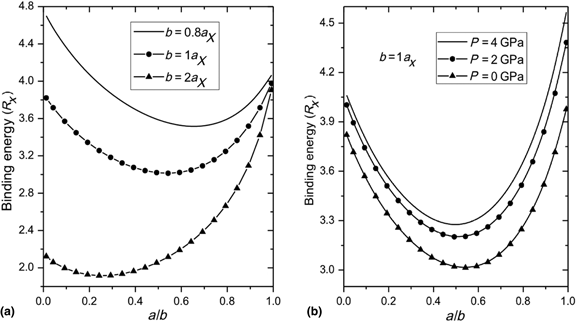Crossref Citations
This article has been cited by the following publications. This list is generated based on data provided by
Crossref.
Ha, S.H.
Liu, H.Q.
and
Zhu, J.
2018.
Temperature and pressure modulation on intersubband optical absorption in an Al Ga1-N/AlN core-shell nanowire.
Superlattices and Microstructures,
Vol. 123,
Issue. ,
p.
183.
Aghoutane, N.
El-Yadri, M.
El Aouami, A.
Feddi, E.
Long, G.
Sadoqi, M.
Dujardin, F.
Nguyen, Chuong V.
Hieu, Nguyen N.
and
Phuc, Huynh V.
2019.
Excitonic nonlinear optical properties in AlN/GaN spherical core/shell quantum dots under pressure.
MRS Communications,
Vol. 9,
Issue. 2,
p.
663.
Aghoutane, Noreddine
El‐Yadri, Mohamed
El Aouami, Asmae
Feddi, El Mustapha
Dujardin, Francis
and
El Haouari, Mohamed
2019.
Optical Absorption of Excitons in Strained Quasi 2D GaN Quantum Dot.
physica status solidi (b),
Vol. 256,
Issue. 5,
Li, Shuo
Shi, Lei
and
Yan, Zu-Wei
2020.
Binding energies and photoionization cross-sections of donor impurities in GaN/AlxGa1−xN spherical quantum dot under hydrostatic pressure.
Modern Physics Letters B,
Vol. 34,
Issue. 14,
p.
2050153.
Wang, Weiyang
Xu, Lei
Wei, Xiangfei
Zhang, Sha
and
Yao, Zhikun
2020.
The effects of hydrostatic pressure and temperature on the nonlinear optical properties of shallow-donor impurities in semiconductors in a magnetic field.
Journal of Applied Physics,
Vol. 127,
Issue. 19,
Makhlouf, D.
Choubani, M.
Saidi, F.
and
Maaref, H.
2021.
Applied electric and magnetic fields effects on the nonlinear optical rectification and the carrier's transition lifetime in InAs/GaAs core/shell quantum dot.
Materials Chemistry and Physics,
Vol. 267,
Issue. ,
p.
124660.
Pérez, Laura M.
Aghoutane, Noreddine
Laroze, David
Díaz, Pablo
El-Yadri, Mohamed
and
Feddi, EL Mustapha
2023.
Intense Laser Field Effect on the Photo-Ionization Cross-Section of the First Exciton Transition in a Core/Shell Quantum Dot Submitted to an Applied Electric Field.
Coatings,
Vol. 13,
Issue. 6,
p.
1098.
